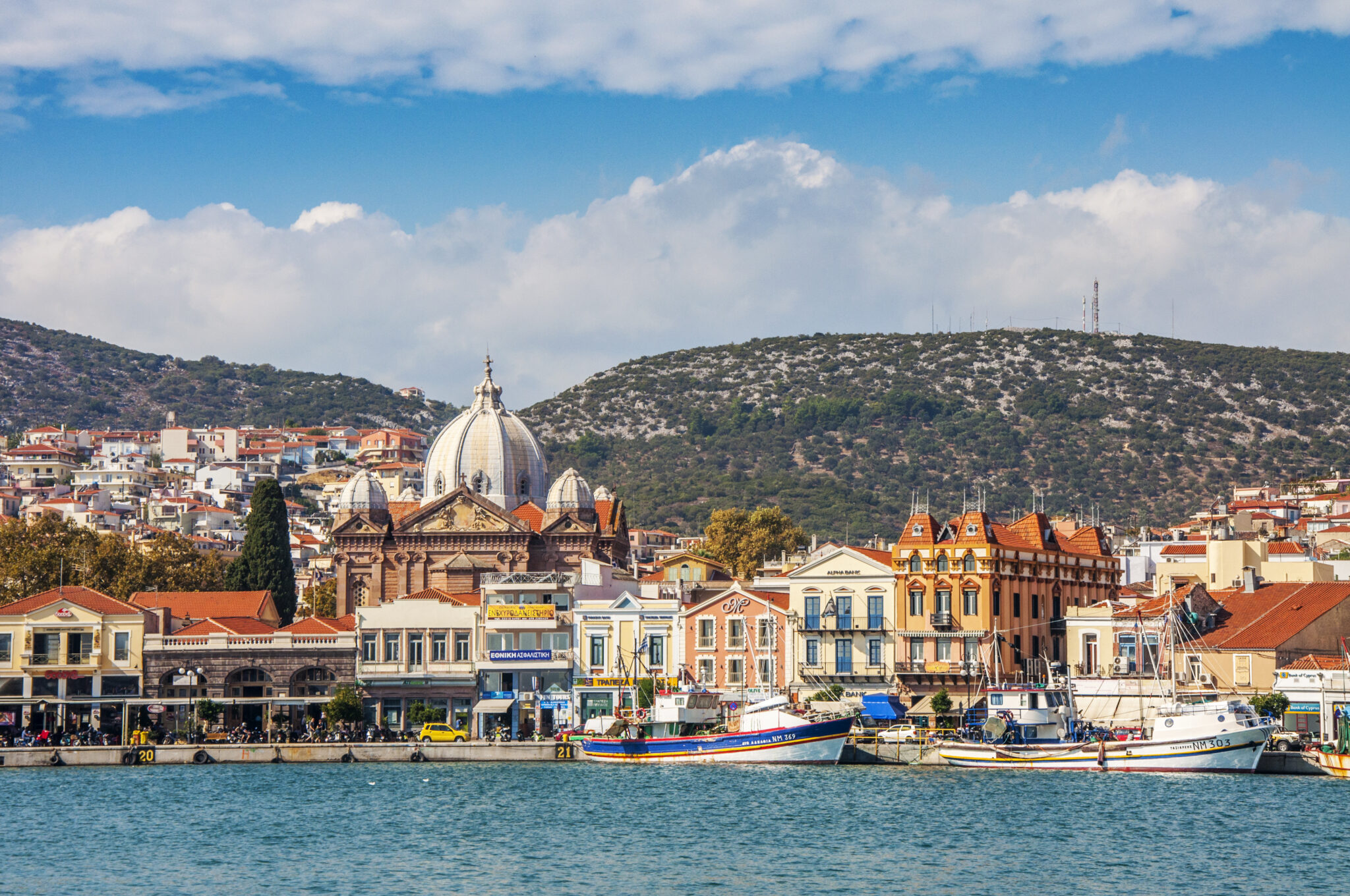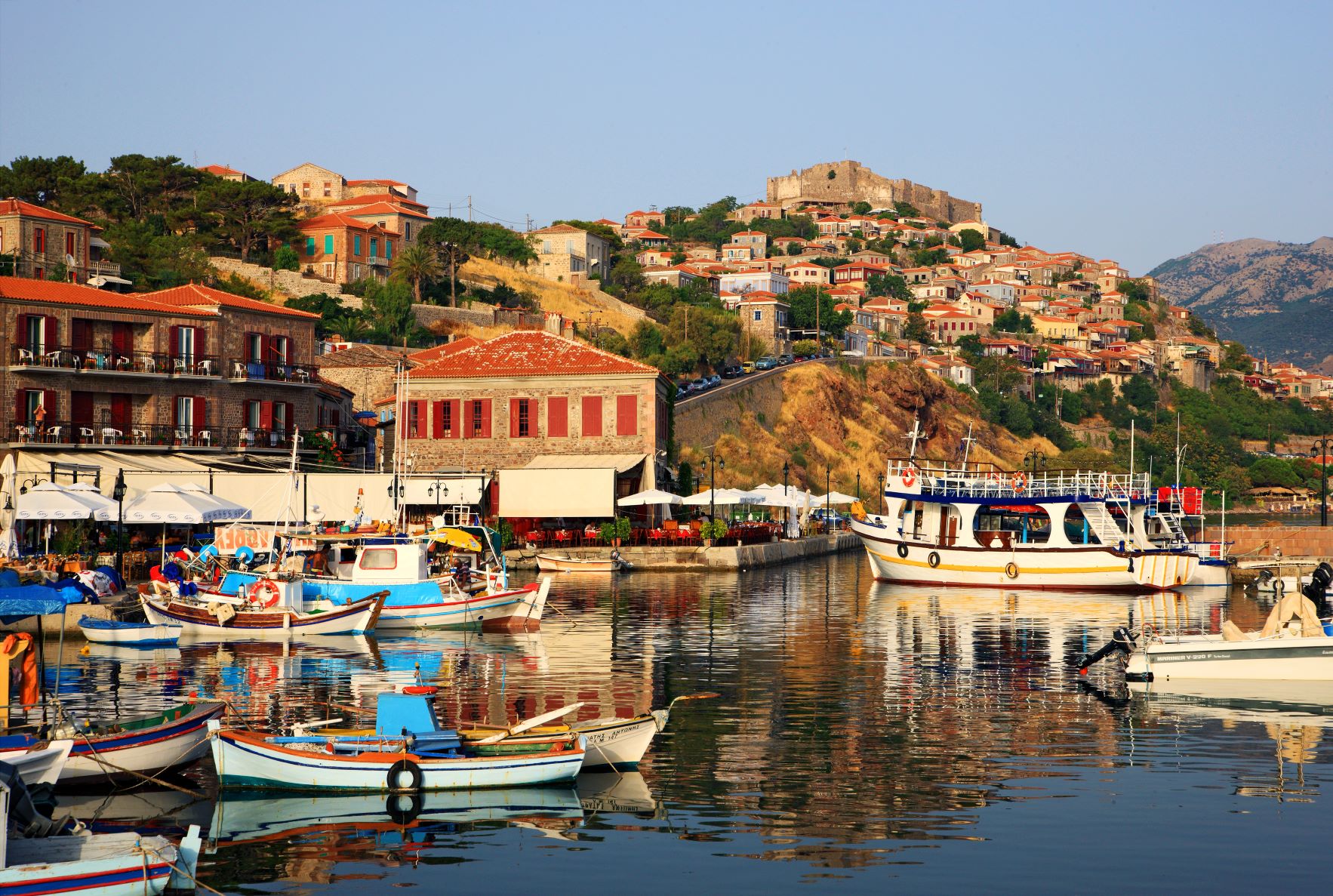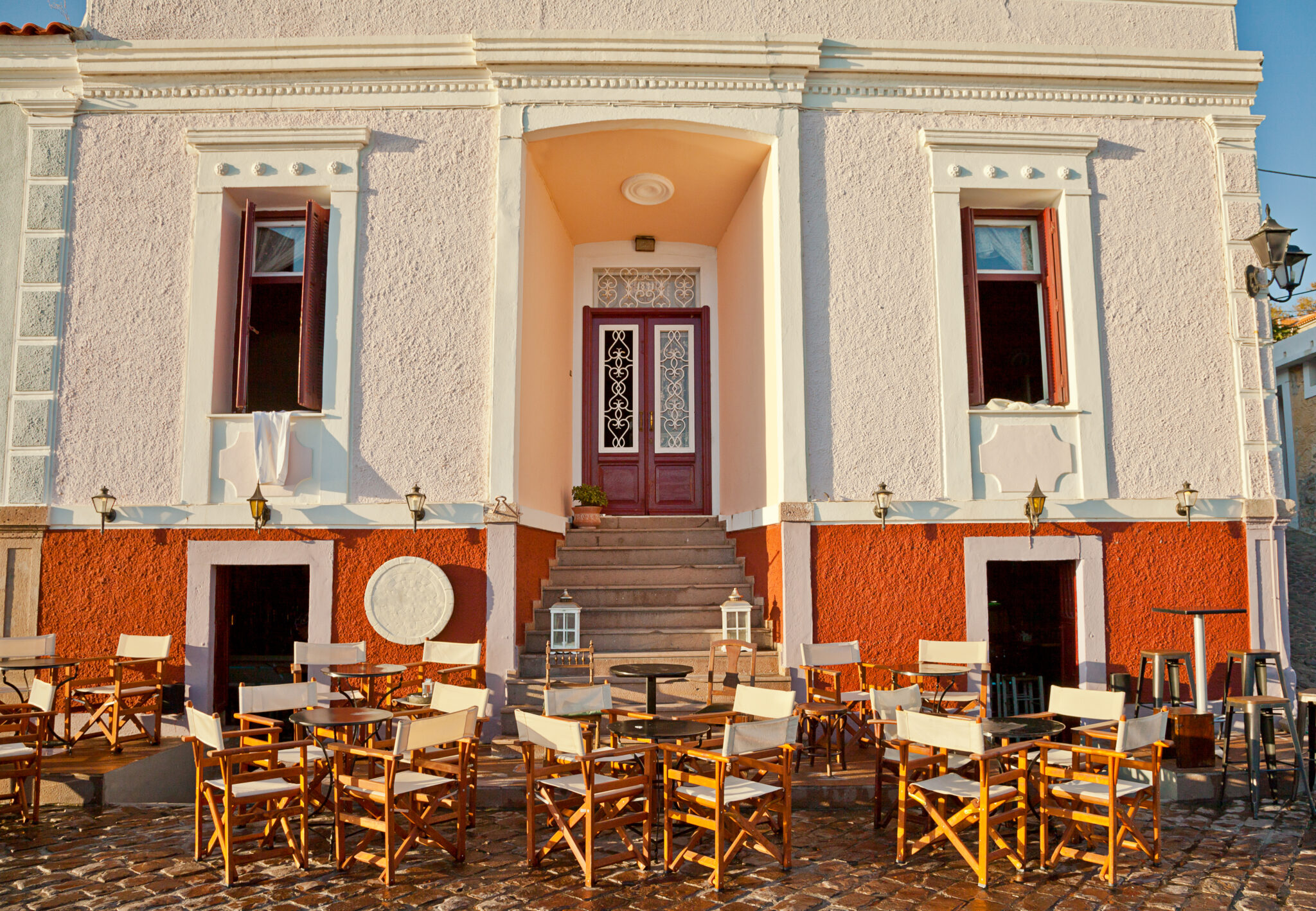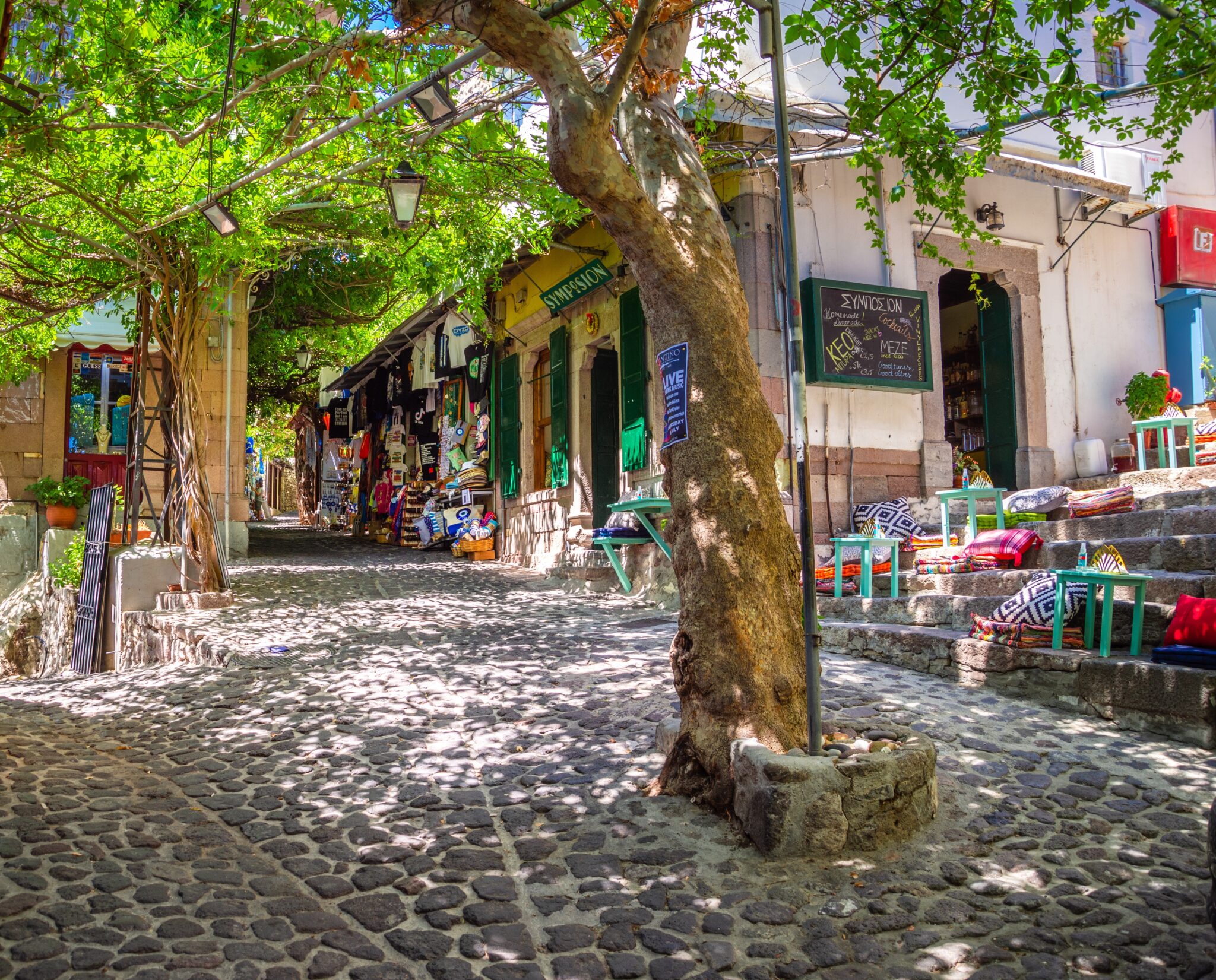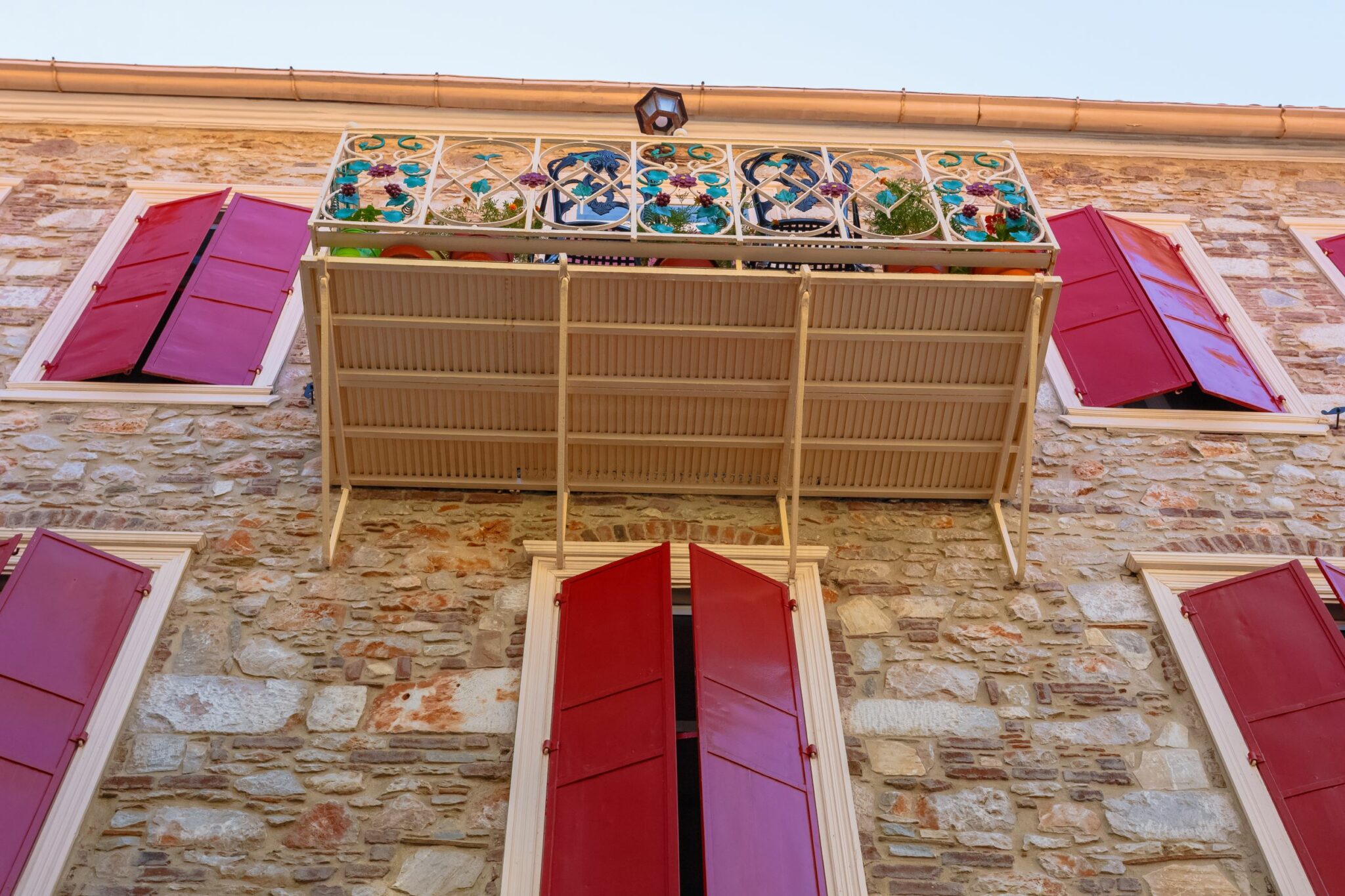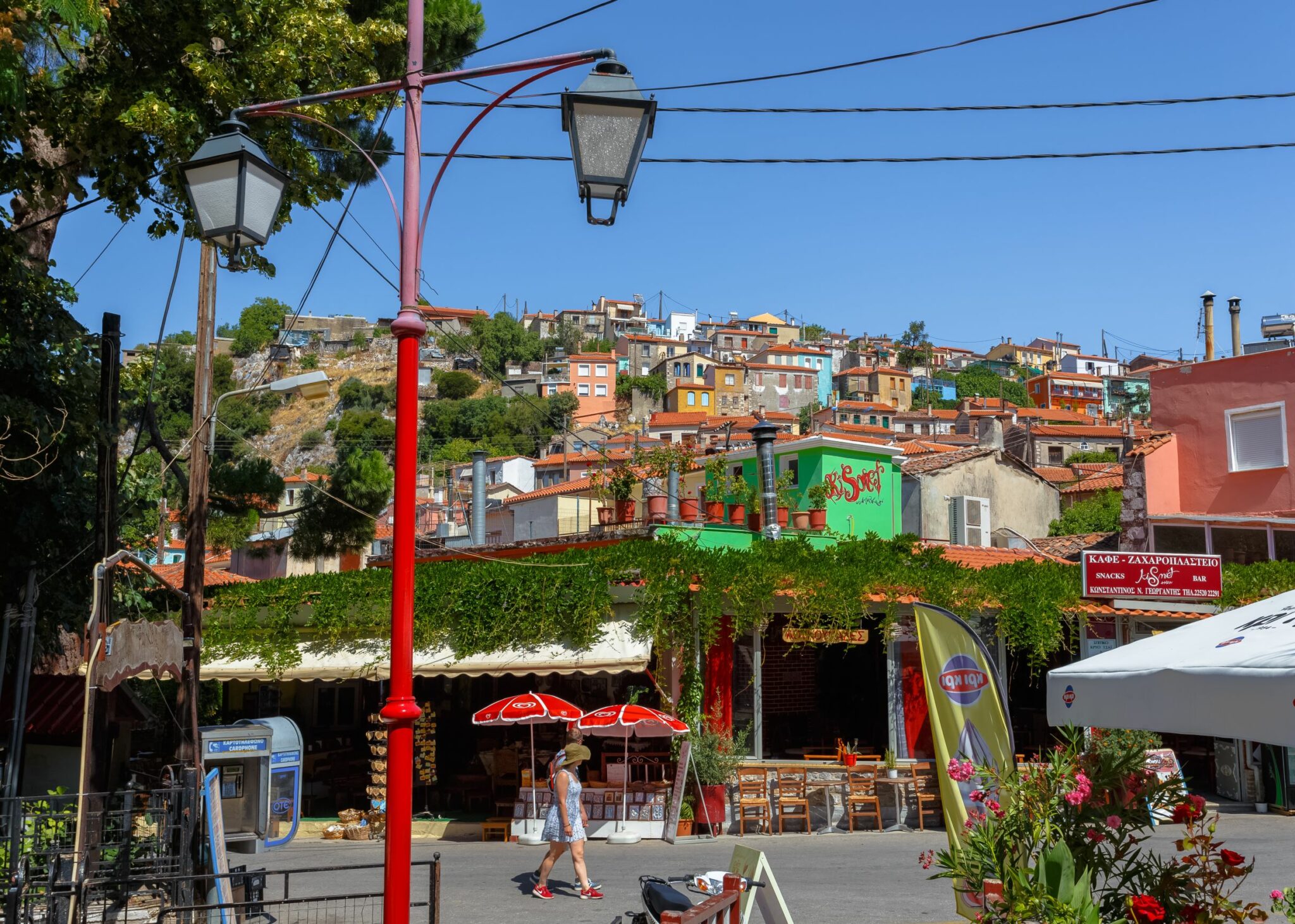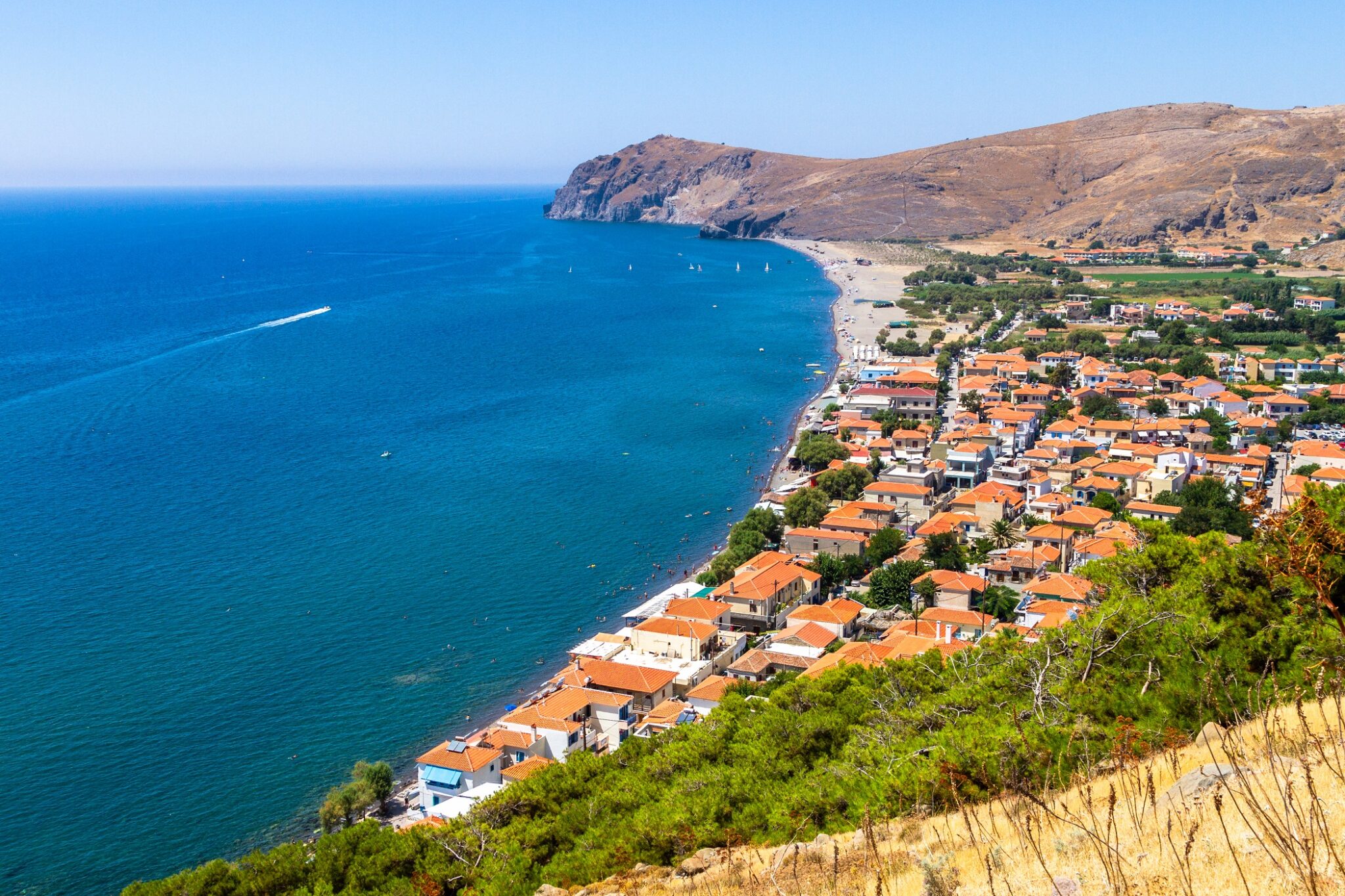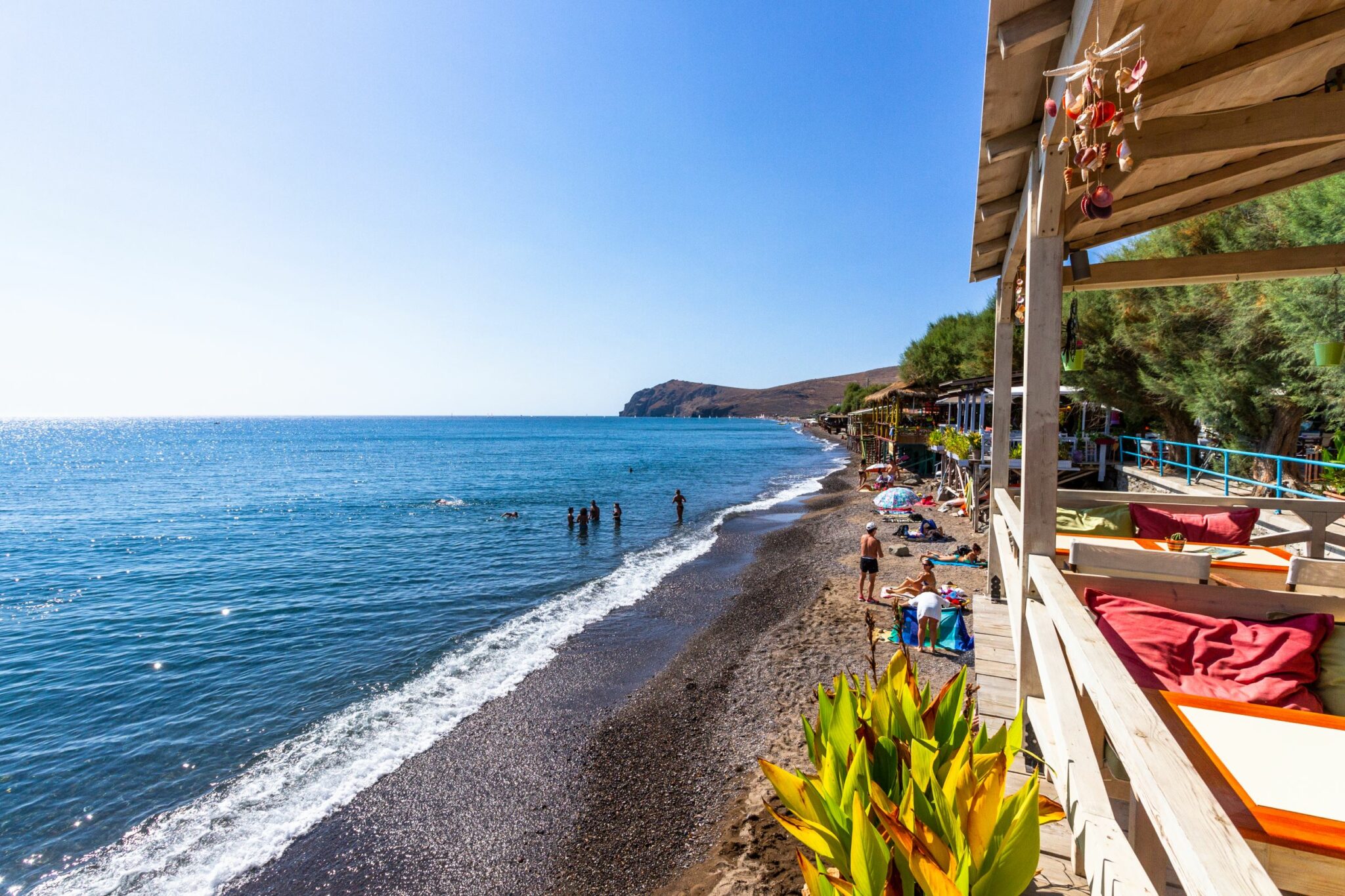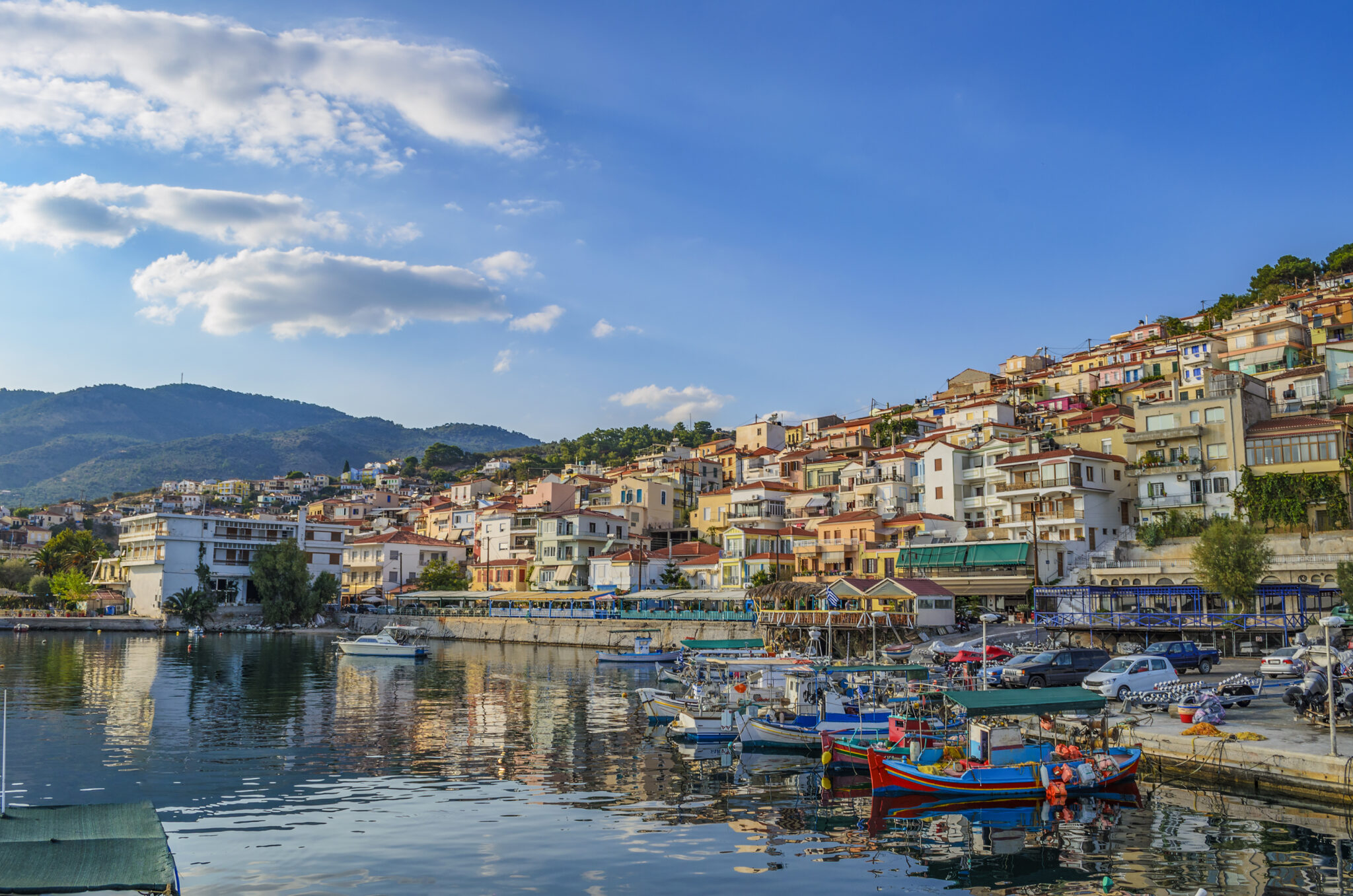Lesvos unfurls like an open fan in the north-eastern Aegean. Its capital, Mytilene, is ideal for exploration and blessed with turquoise seas and sandy beaches – some fringed with rocks, others with pebbles or seaweed.
Many of its villages are preserved coastal and mountain settlements that hint at a quality of life that is, regrettably, beginning to fade, yet offer visitors a great array of memorable things to see, do and taste.
We suggest you commence your holidays by spending the first few days in the capital town of Mytilene, and then venture to historic Molyvos, followed by Petra or Anaxos. If you have plenty of time, next visit Kalloni, Plomari and Gera, and round off your acquaintance with Lesvos in Eressos or Sigri. Using these specific points on the island that have the appropriate accommodation infrastructure as your starting point each time, you will be able to discover and enjoy the attractions and natural beauty of the surrounding areas.
Mytilene
Mytilene, the main port and capital of Lesvos, unveils its most enchanting facet as you approach it from the sea; as the welcoming sight of the harbour unfolds, graced by the waterfront’s neoclassical buildings. These structures, influenced by Northern European architecture, present a unique aesthetic with their pointed rooftops. The bell tower of the Metropolitan Church rises majestically above the town, contributing to the picturesque skyline. To the right, the renowned, large Castle of Mytilene, built during the reign of the Byzantine Emperor Justinian, stands imposingly, adding to the historic charm of the island. The hill of Agia Kyriaki, home to an ancient theatre, completes this captivating panorama.
Situated on the island’s eastern coastline, opposite Turkey’s shores, Mytilene’s architectural design is amphitheatrical, nestled between seven lush hills that seamlessly merge into the natural harbour. The town is a delightful mix of quaint suburbs and ancient neighbourhoods, with its buildings and archaeological landmarks showcasing the island’s rich heritage.
Beyond its historical and aesthetic appeal, Mytilene serves as an ideal destination for tranquil holidays. The historic centre buzzes with life, with a plethora of bars, restaurants, and traditional tavernas and ouzeries serving top-notch cuisine tucked away in charming alleyways. The town is also popular for its diverse accommodation options and pristine beaches.
Molyvos
Nestled 60 kilometres west of the island’s capital of Mytilene is the medieval village of Molyvos, also named Mythimna. Retaining its traditional architecture, this preserved hamlet charms visitors with its scenic splendour. The village’s quaint beauty unfolds through its narrow alleyways that meander around time-honoured stone houses, graceful mansions, and Turkish-style fountains, generating a serene, idyllic ambience.
Its crowning glory is its medieval castle, perched atop a rugged cliff. This fortress, the second largest on Lesvos, commands an awe-inspiring view over the Aegean Sea. It serves as a testament to the village’s historical significance, along with its diverse archaeological collection, myriad Byzantine churches, and stately neoclassical buildings.
In its heyday, following the Treaty of Kucuk-Kaynarca, the village blossomed into a bustling commercial hub. Its whitewashed window frames, which look like eyes underlined with eyeliner, beckon visitors to abandon their car and ascend on foot to the medieval Gattilusi dynasty castle. This fortress, one of Greece’s best-preserved, offers an arresting view of the Aegean Sea, extending to the coasts of Asia Minor. In Molyvos, visitors are warmly welcomed with a plethora of accommodations, charming cafes, and seaside tavernas.
Agiasos
Perched on Mount Olympus’ slopes, Agiassos is celebrated chiefly for its vibrant traditions, scenic beauty and flourishing trade. Its steep, winding streets and modest dwellings with Turkish-style wooden balconies reflect a bygone era, and the village is sprinkled with tall buildings featuring large, brightly painted doors.
In Agiasos, a unique local dialect reflects its distinct culture, with playful words and humour found in various renditions. Indeed, Agiasos’ inhabitants are known for their sharp wit, hard work, and deep faith, earning the village the nickname “Mother of School Teachers” due to the high number of educators hailing from there.
Surrounded by lush greenery, the village is home to chestnut, walnut, apple and wild cherry trees, which contribute to a picturesque landscape in every season. The region’s vibrant floral diversity, including colourful anemones, cyclamens, peonies, and wild orchids, adds to its natural attractiveness.
Eressos
On the north-western side of Lesvos, mountainous Eressos is somewhat dry, barren, and wind-beaten, haunted for 20 million years by a volcanic eruption, and like a Cycladic island that came and stuck to the rest of Lesvos, drowning in olive groves and pines. In the summer, most of the action takes place in Skala Eressos, a wide sandy beach buzzing with life that’s over 3 kilometres long.
The village has distinctive architecture, a few historical landmarks, quality hospitality and dining options, and a verdant plain connecting the village to the coast. Named after Éressos, the son of the mythical King Makaros, it was established between the 11th and 9th centuries BC by the Pelasgians. It soon developed into a central trading hub extending to Egypt, and was the home not only Sappho but also to philosophers Phanias and Theophrastos.
Known for its universal flair, Eressos’ appeal spans from families drawn to the child-friendly sandy bays of Skala Eressos to avid nature enthusiasts. Here, activities such as nature hiking and birdwatching have earned the attention of many a photographer or artist in search of a dramatically varied setting in which the barren co-exists with the lusciously green and the sandy coastline is peppered with thousands of vividly-coloured wildflowers.
Plomari
The second-largest town of Lesvos, Plomari lies 40 kilometres south of Mytilene. Nestled amphitheatrically amidst verdant hills around a natural bay, it looks out to splendid sea views. The village’s charming homes, narrow lanes, and handsome churches contribute to its picturesque allure. The dry riverbed of the Sedountas river, which fills and swells in the colder months, adds to the serene winter atmosphere, making life here uniquely appealing.
Renowned for its cultural heritage and musical traditions, Plomari often hosts local folk dance festivals that display the character of its friendly, sociable inhabitants and is most famous for producing excellent local ouzo and top-quality olive oil.
The unique architecture of Plomari sets it apart from other Aegean towns. Its neoclassical mansions, bold-coloured walls, old wooden doors, and flowers in upcycled olive oil cans create a timeless appeal. Its main attractions include intriguing sites, churches atop rocks, and a variety of accommodations and eateries.
Read also:
A Spirited Tour of Some Ouzo Distilleries on Lesvos
Agiasos, the colourful mountain jewel of Lesvos
Lesvos: Gastronomic paradise of the Northern Aegean with turquoise waters and sandy beaches



